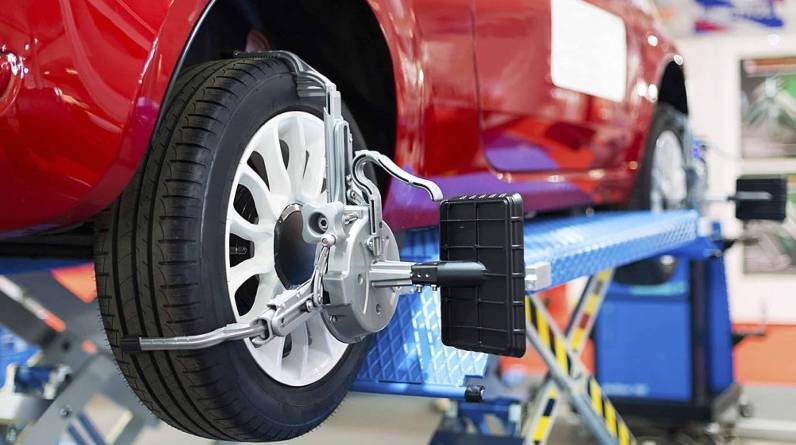When it comes to maintaining a smooth and safe driving experience, wheel alignment and balancing play a crucial role. Proper alignment and balancing of wheels not only enhance vehicle performance but also contribute to tire longevity and overall driving comfort. In this article, we delve into the significance of wheel alignment and balancing, exploring their benefits, explaining the process, and emphasizing their impact on your driving experience.
The Essence of Wheel Alignment
Adjusting the angles at which the wheels make contact with the ground is referred to as wheel alignment. It is crucial for a number of reasons:
superior Handling and Control: A properly aligned vehicle has wheels that are perpendicular to the road and parallel to each other, which results in superior handling and control.
increased tyre life Proper alignment stops uneven tyre wear, prolonging the useful life of your tyres and ultimately saving you money.
Fuel Economy: When your wheels are perfectly aligned, your car will roll with less resistance, which will enhance fuel economy.
Stability and safety: Correct alignment lessens the possibility that your car may pull to one side, guaranteeing stability and safe operation on a variety of roads.
The Significance of Wheel Balancing
Equalising the weight distribution of a tyre and wheel assembly is the process of wheel balancing. It has a lot of benefits:
Ride that is Smooth and Comfortable: Balanced wheels reduce vibrations and provide a comfortable ride for the driver and passengers.
Tyre Durability: Balancing minimises excessive tyre wear, increasing tyre life and making the most of your investment in high-quality rubber.
Protection of the suspension system: Balanced wheels reduce the strain on the suspension system’s parts, reducing early wear and damage to crucial components.
Road Safety: Balanced wheels increase stability and traction, which lowers the chance of accidents and improves all-around road safety.
The Wheel Alignment Process
Achieving proper wheel alignment involves a meticulous procedure carried out by skilled professionals:
Inspection: A thorough inspection of the suspension system, steering components, and tire condition is conducted to identify any underlying issues.
Adjustment: Technicians make precise adjustments to the angles of the wheels, aligning them according to the manufacturer’s specifications.
Test Drive: A test drive is performed to ensure that the wheel alignment adjustments have resulted in improved handling and driving dynamics.
The Wheel Balancing Process
Wheel balancing requires precision and accuracy to achieve optimal results:
Mounting: The tire and wheel assembly is mounted onto a balancing machine, which determines the weight distribution across the wheel.
Correction: Counterweights are strategically added or removed to balance the wheel, ensuring even weight distribution.
Learn more about it – jacin’s ruse armor set
Verification: The balanced wheel is rechecked on the balancing machine to confirm that it meets the required specifications.
In brief, wheel alignment and balancing are essential maintenance practices that should not be overlooked. Proper alignment improves handling, enhances tire life, and contributes to fuel efficiency, while wheel balancing ensures a smooth and comfortable ride, maximizes tire longevity, and promotes safety on the road. Investing in regular wheel alignment and balancingo ptimizes your vehicle’s performance and safeguards your investment in tires and suspension components.
